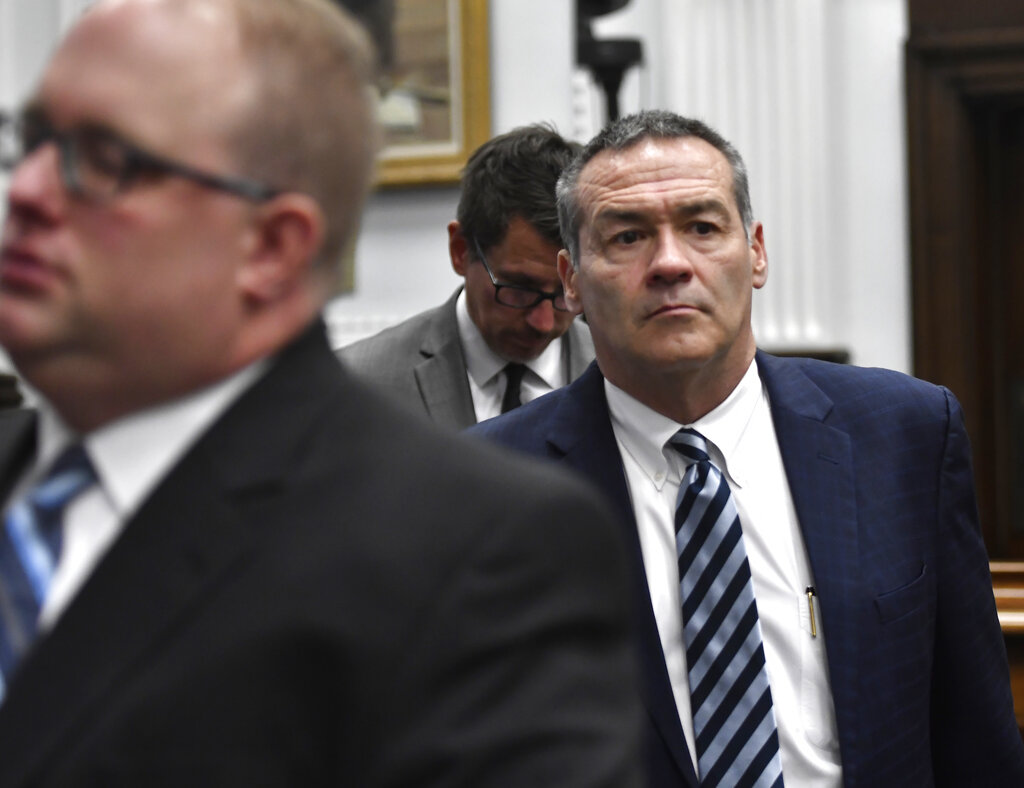Closing arguments wrapped up Monday night in the high-profile trial of Kyle Rittenhouse, an Illinois teenager charged in the fatal shooting of two men and injuring of a third during a riot last year in Kenosha, Wisconsin.
Prosecutors painted Rittenhouse, now 18, as an inexperienced trigger-happy tourist drawn to chaos while defense attorneys countered that the former youth cadet feared for his life and was forced to fight his way out of an escalating situation.
Rittenhouse’s defense attorneys told jurors their client did not have to “take a beating” from an angry mob in order to claim self-defense and that his behavior was protected under state law.
“Every person who was shot was attacking Kyle,” said defense attorney Mark Richards.
He also strongly objected to prosecutors calling Rittenhouse an “active shooter” because of “the loaded connotations of that word.”
Richards spent part of his two-hour closing argument accusing Assistant District Attorney Thomas Binger of being “a liar” who misrepresented evidence and “changed his strategy” to fit evolving narratives after his original case “blew up in his face.”
“This is not a game,” Richards said. “We don’t play fast and loose with the facts.”
Rittenhouse is charged in the fatal shootings of Joseph Rosenbaum, 36, and Anthony Huber, 26, during a night of riots in the small Wisconsin town on Aug. 25, 2020. He also wounded Gaige Grosskreutz, 28, after blowing off his bicep.
The teenager from Antioch, Illinois, faces five criminal charges ranging from intentional homicide to recklessly endangering safety. He has pleaded not guilty. If convicted of the most serious charge, he could spend the rest of his life behind bars.

Judge Bruce Schroeder dismissed the sixth and most minor charge against the Illinois teenager: a firearm misdemeanor.
Richards, who claimed Binger had a “personal goal of putting my client’s head on his wall,” told jurors to “use common sense.”
The jury will begin deliberations Tuesday morning.
“You will pay no heed to the opinions of anyone, even the president of the United States or the president before him,” Schroeder said.
RITTENHOUSE WAS A ‘FRAUD’ WHO MADE HIMSELF OUT TO BE A WESTERN HERO, PROSECUTORS SAY IN CLOSING
Earlier in the day, Binger told jurors Rittenhouse was in Kenosha looking for trouble and accused him of being a “wannabe soldier acting tough,” saying he “ran around with an AR-15 all night and lied about being an EMT.”
Binger said “the only person who killed anyone was Rittenhouse” and threw doubt on the teenager’s claim he was there to “genuinely help.”
Binger showed the jury a segment of drone video that he said depicted Rittenhouse pointing the AR-style rifle at protesters in the streets.
“This is the provocation. This is what starts this incident,” he said.
He added, “You lose the right to self-defense when you’re the one who brought the gun, when you are the one creating the danger, when you’re the one provoking other people.”
RITTENHOUSE JUDGE DISMISSES UNDERAGE GUN CHARGE
Prosecutors and defense attorneys made their last pitches to convince a 12-person jury whether Rittenhouse was legally justified when he pulled the trigger and shot three men in less than three minutes.
Rittenhouse, who was 17 at the time, journeyed to Kenosha where unrest was sparked by a white police officer shooting a black man, Jacob Blake, in the back seven times at close range, partially paralyzing him.
The protests gave way to riots that ended in two deaths, several injuries, multiple arrests, and $50 million in damages.
The defense rested its case Thursday, with some of the most compelling moments coming from Rittenhouse himself. Despite prosecutors painting him as a vigilante out of his depth, Rittenhouse told the jury he had no other choice than to fight his way out of an escalating situation.
He said he feared for his life when Rosenbaum lunged at him, Huber hit him with a skateboard, and Grosskreutz pointed a gun at him.
Rittenhouse answered questions for about six hours. When he first took the stand, he sobbed, prompting the judge to call for a short recess. When the court proceedings resumed, Rittenhouse calmly answered questions and explained his thought process that night.
“I didn’t want to have to kill anybody,” he said. “I was being attacked.”
The prosecution’s case was at times uneven. Its star witness, Grosskreutz, the only person to survive being shot by Rittenhouse, appeared to led support to the defendant’s claim that he acted in self-defense.
During cross-examination, the volunteer medic testified that Rittenhouse shot him in the arm after he approached and pointed his pistol in Rittenhouse’s direction.
CLICK HERE FOR MORE FROM THE WASHINGTON EXAMINER
Daily Caller videographer Richie McGinnis testified he saw Rosenbaum lunge at Rittenhouse and reach for the barrel of his gun.
Schroeder’s courtroom was packed Monday, with a line of people waiting to get a seat. Outside the courthouse, someone had erected a cutout of Rittenhouse and a man stood on the corner waving an upside-down American flag, the Associated Press reported.
On Friday, Gov. Tony Evers activated 500 Wisconsin National Guard troops to partner with local law enforcement.
“I urge folks who are otherwise not from the area to please respect the community by reconsidering any plans to travel there and encourage those who might choose to assemble and exercise their First Amendment rights to do so safely and peacefully,” Evers said.
